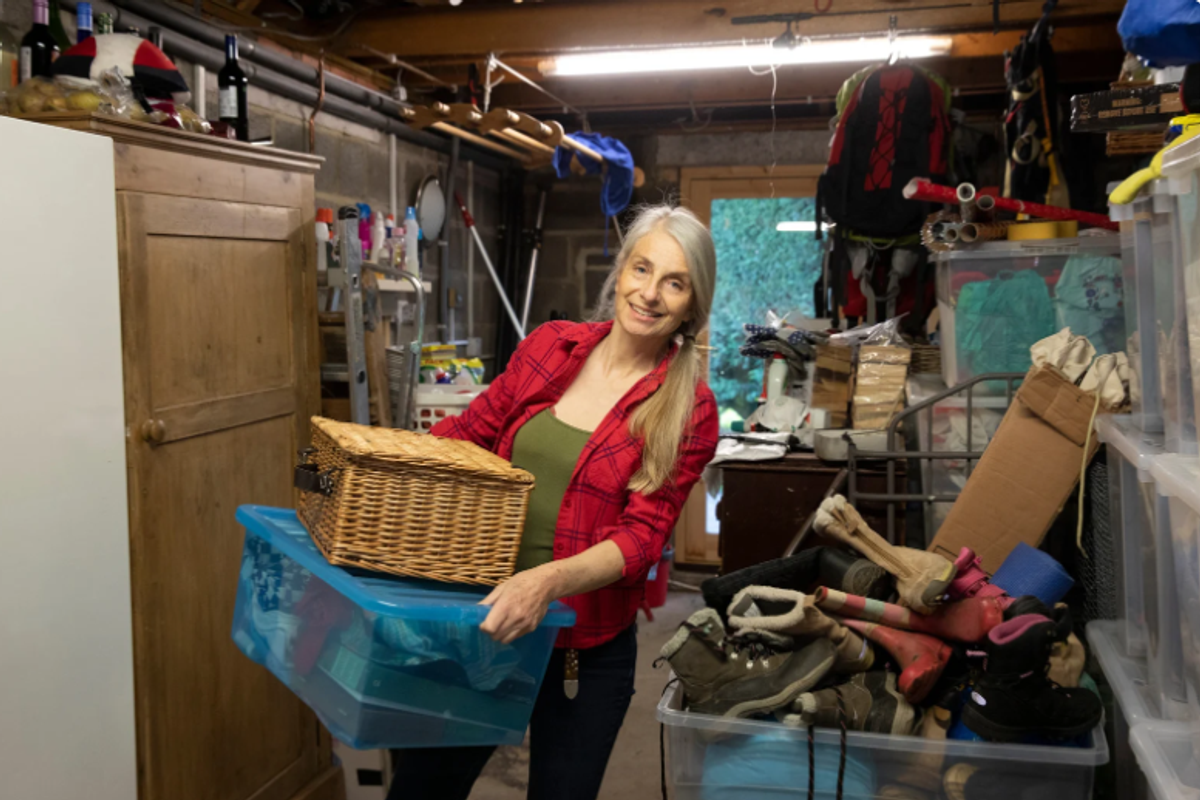Why we should all be mad that Congress banned members from video streaming.
Banning members from streaming video to social media poses a big challenge to transparency.
On Tuesday, Jan. 3, members of the 115th Congress were sworn into office.
It was kind of like a first day of school: There was a lot of light chat among members and their families and a somewhat relaxed atmosphere. That didn't stop Speaker of the House Paul Ryan (R-WI) from getting a bit of business done, however.
As is first-day tradition, the House of Representatives voted on the set of rules that will guide them for the next two years.
Photo by Jim Watson/AFP/Getty Images.
Tucked away in the House rules was a provision aimed at preventing lawmakers from streaming video from the floor to social media.
Violators would be charged a fine for streaming. At first glance, it seems to make sense in a sort of "no phones at the kitchen table" kind of way. After all, if C-SPAN cameras are rolling and streaming to the world, why would any individual member of the House need to start their own live broadcast?
The answer: Sometimes those C-SPAN cameras aren't rolling — and for a very troubling reason.
In June 2016, Democrats in the House took to the floor in an act of protest after Ryan decided against bringing a gun safety bill up for a full vote.
In the wake of the Pulse nightclub shooting in Orlando, Democrats made a push for gun safety reform. In the Senate, Chris Murphy (D-CT) led a 17-hour filibuster aimed at getting Republican leadership to agree to put two gun control amendments up for an up-or-down vote. (He succeeded in getting the vote, though both amendments were shot down days later.)
In the House, Democrats, led by civil rights hero Rep. John Lewis, staged a sit-in after Republicans made the decision not to bring similar gun control legislation up for a floor vote.
The real controversy began when Ryan ordered the C-SPAN video feed of the House floor turned off. The Democrats were free to protest, but would no longer have an audience.
It turns out that the cameras that show the action on the House floor aren't owned or controlled by C-SPAN, but rather, by Congress itself. Given that Ryan and his Republican colleagues finished up for the day and the cameras are only required to be "on when the House is in session" (as per the rules voted on by the 114th Congress), Ryan did have every right to cut the TV feed.
In response, some members of the protest began to broadcast the sit-in from their phones. It was an innovative approach to a complicated problem. Using Periscope and Facebook Live, the legislators provided insight to constituents. C-SPAN even picked up the feeds, sharing them on their TV and social channels.
The newly proposed rules, however, aim to prevent members of Congress from repeating such a broadcast, something Ryan may want to reconsider.
In 2008, the very same thing happened — except it was the Republicans holding a protest with Democratic leadership giving them the cold shoulder. On Aug. 1, 2008, then-Speaker of the House Nancy Pelosi (D-CA) and her Democratic colleagues voted to adjourn. The chamber's lights were turned off, the cameras were cut, and microphones were shut off, making some Republicans pretty upset.
Rep. Nancy Pelosi and other House Democrats speak before the 2016 sit-in. Photo by Alex Wong/Getty Images.
For hours, members of the GOP held the floor in protest. They had hoped Pelosi would bring a bill related to off-shore drilling up for a vote. To their dissatisfaction, she didn't, and so the Republicans traded off impromptu speeches from the floor about the benefits of drilling, arguing that it would lower gas prices and having the type of discussion the House of Representatives was meant to have.
In 2008, the ability to broadcast live video from a cell phone wasn't as easy as pulling up an app, the way it was during last year's protest. Regardless, it was wrong of Democrats to use their majority to silence Republicans in 2008, just as it was wrong for Republicans to do so to Democrats in 2016.
If we want to have robust, transparent debate between parties, we need to make sure all voices are heard, regardless of which party sits in the majority.
It sets a dangerous precedent for members of Congress to be able to create a media blackout anytime one of their colleagues makes an argument they don't like. If Ryan wants to fine members of the House for streaming from the floor, he should allow C-SPAN to install their own independently-run cameras. Knowledge and transparency should not be subject to partisanship.
Being able to see what happens on the floor of the House and the Senate is one of the most wonderful things to come out of technological advancement. While not every word spoken will be beautiful or insightful — for example, there's the time Ted Cruz read "Green Eggs and Ham" on the Senate floor — it's all part of our history.
Constituents have a right to know when the people they put in office are going to great lengths to represent the values they voted for — and when their opponents are trying to block them from doing so. Being able to see when our representatives are arguing on our behalf, staying up all night to protest, and broadcasting from the floor shows citizens that their voices are being heard.
The rules, as they were just voted on, take that away from us, and it's a major blow to democracy and transparency.
Photo by Win McNamee/Getty Images.






 Friends sharing a moment in the sunlit park.
Friends sharing a moment in the sunlit park. Feeling the stress: A young woman holds her head in frustration.
Feeling the stress: A young woman holds her head in frustration. Friends sharing a laugh over coffee at a cozy café.
Friends sharing a laugh over coffee at a cozy café.
 Close up of lilac flowers. Photo by
Close up of lilac flowers. Photo by